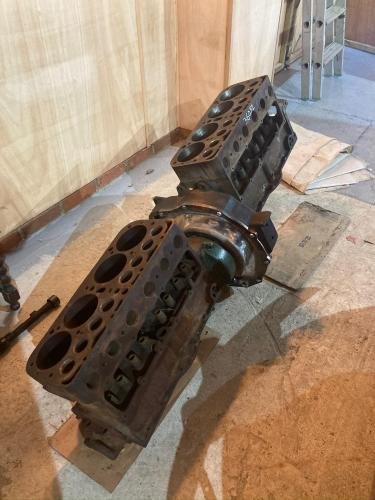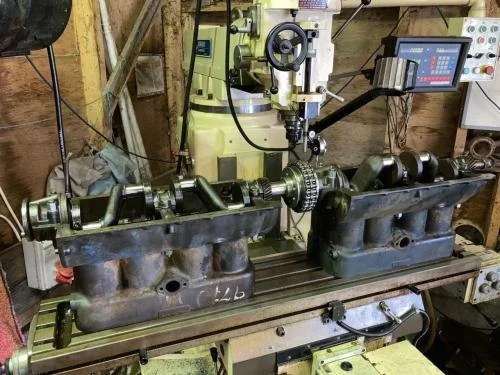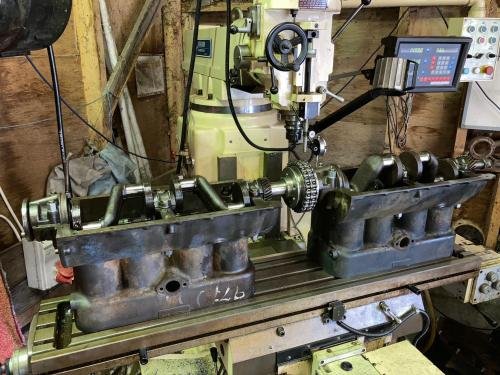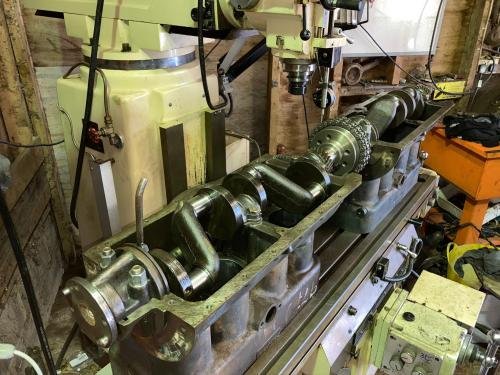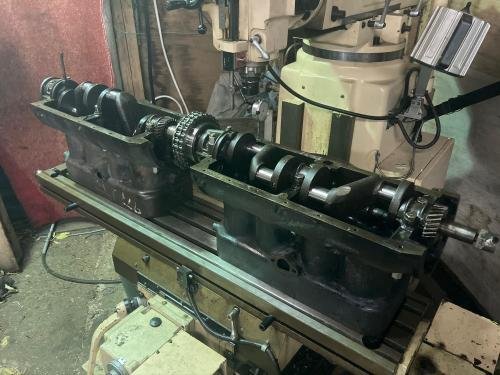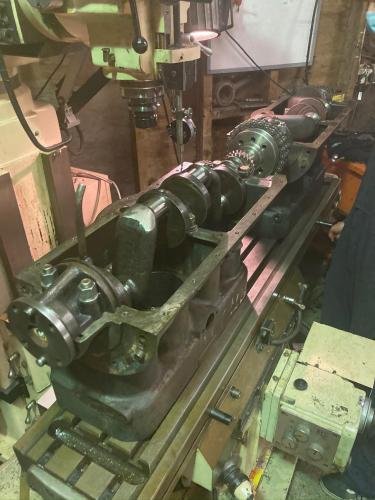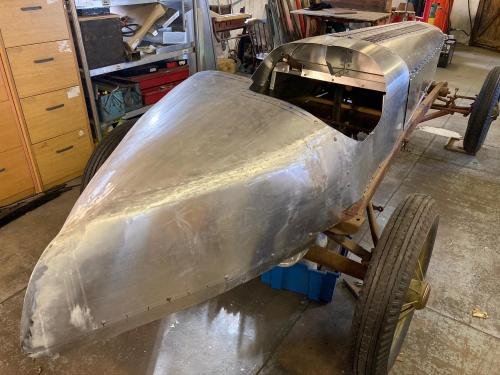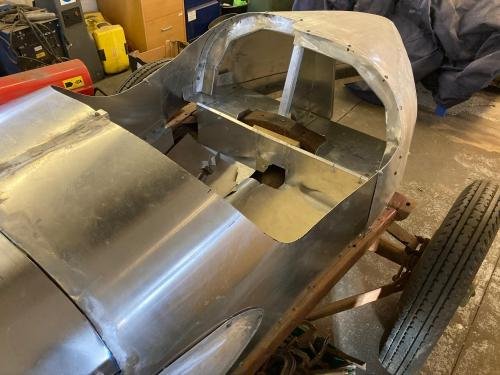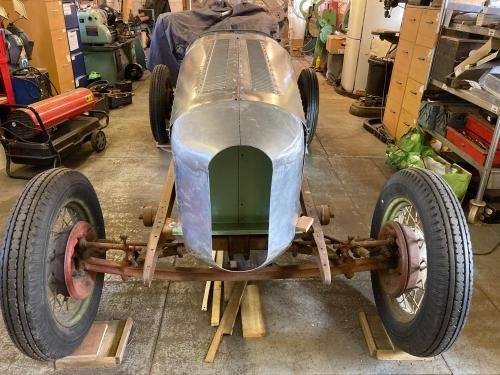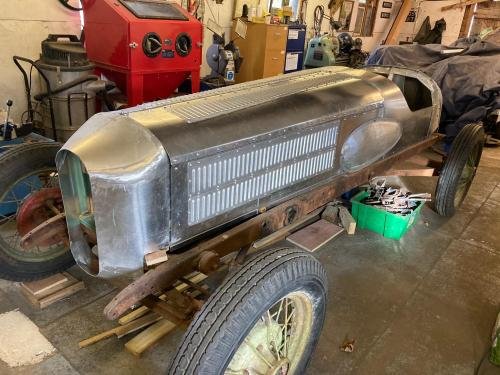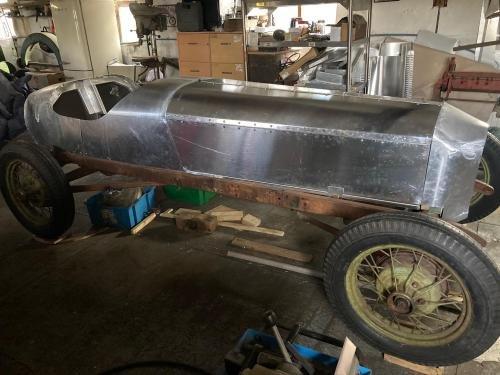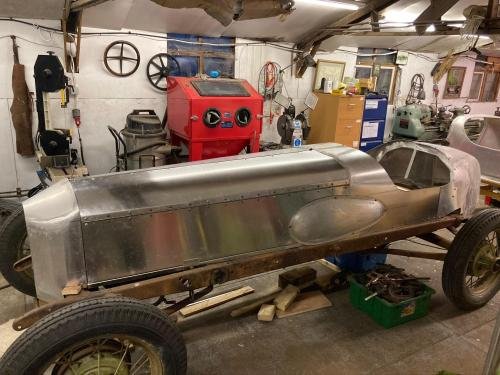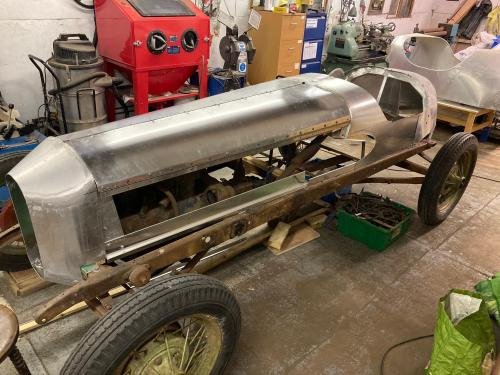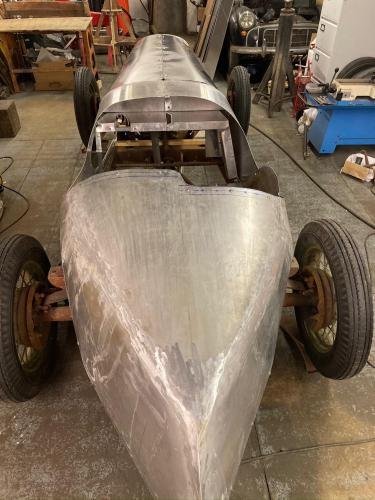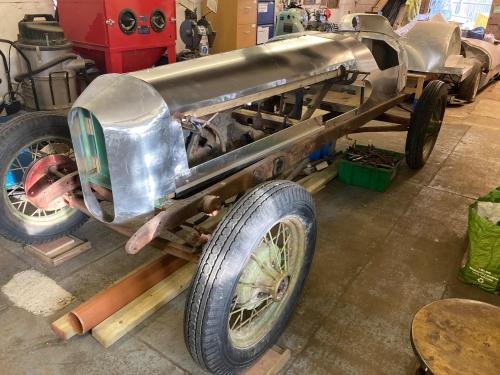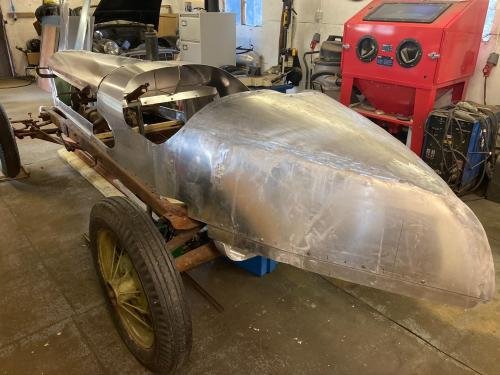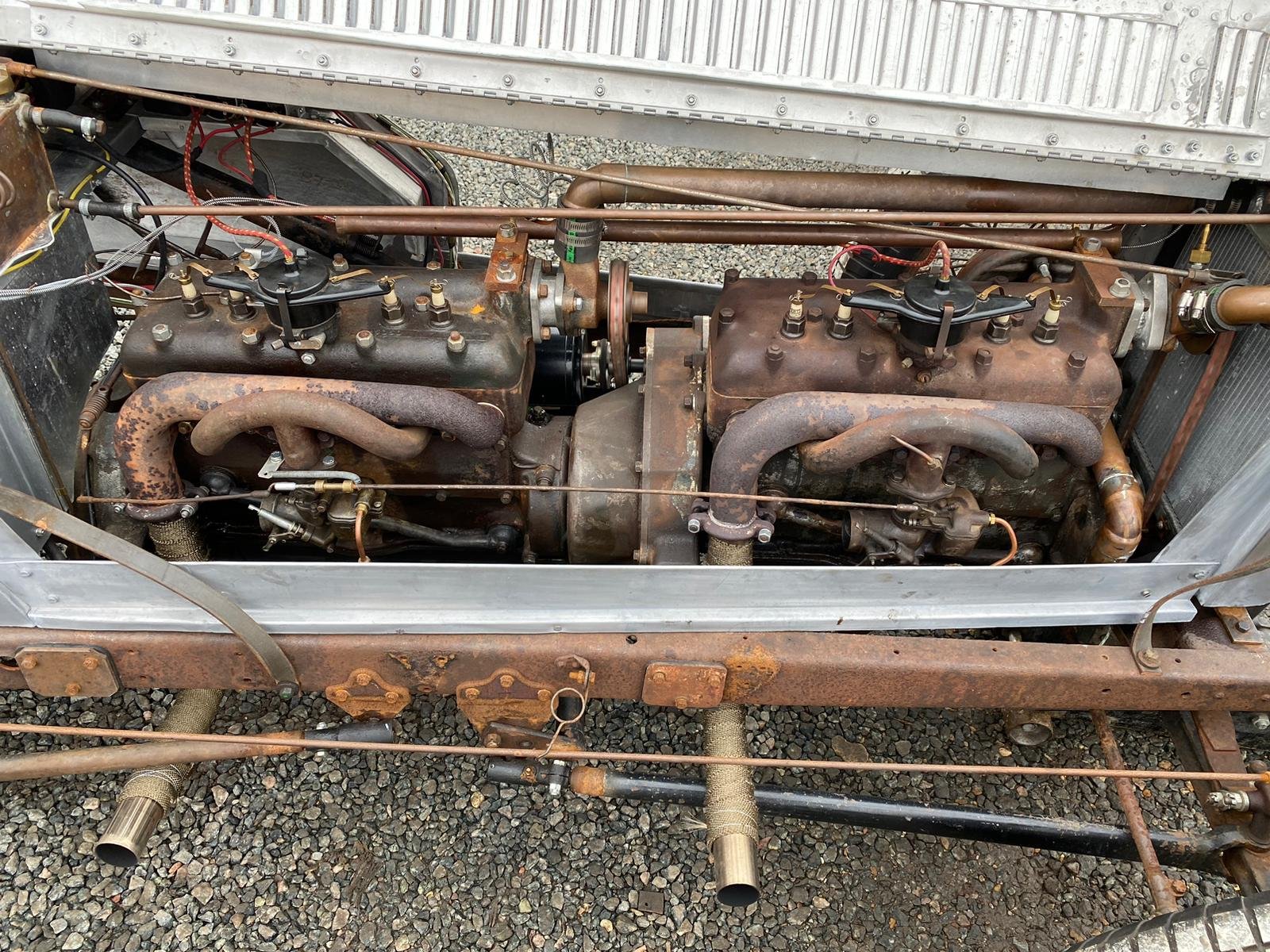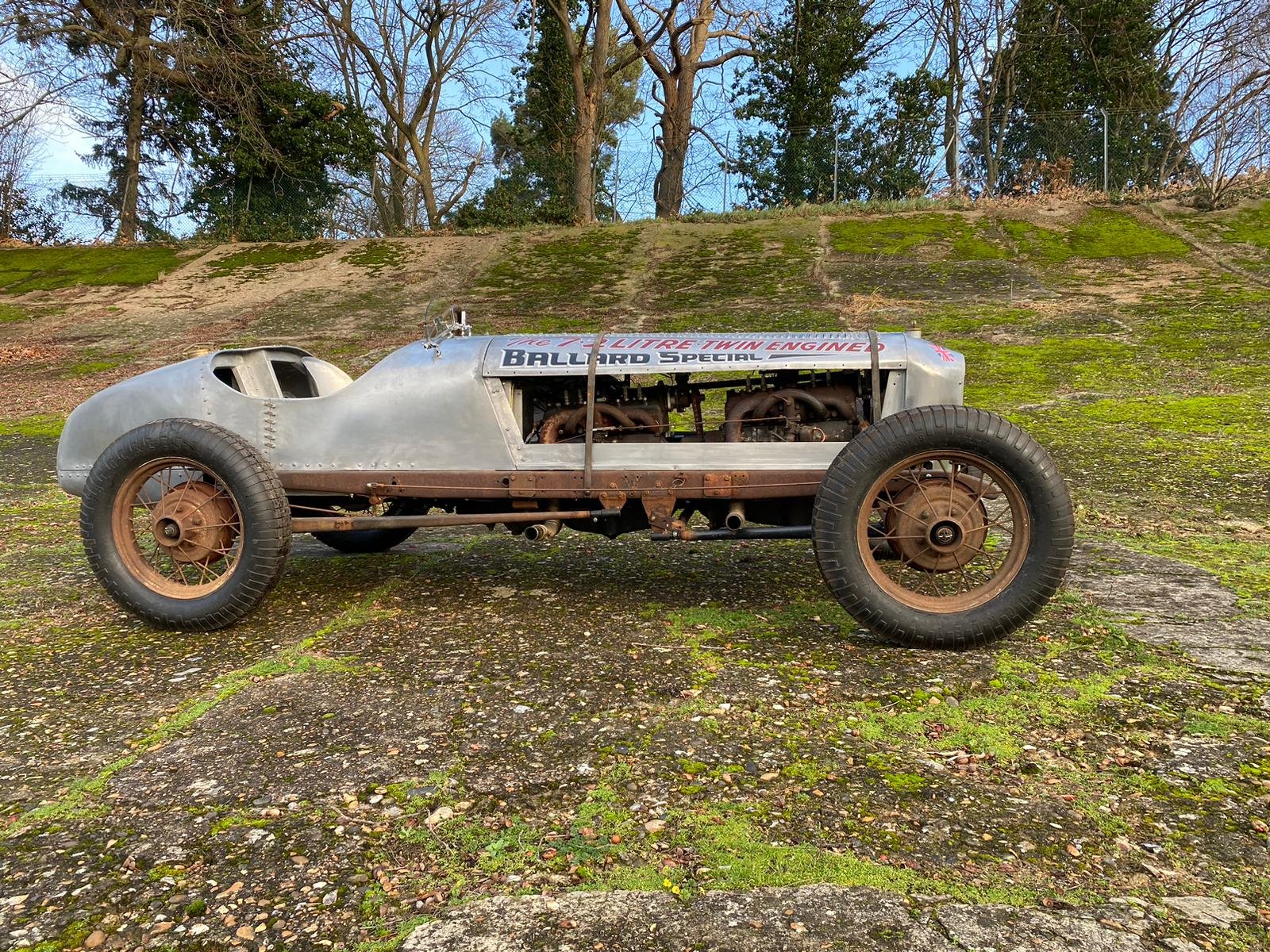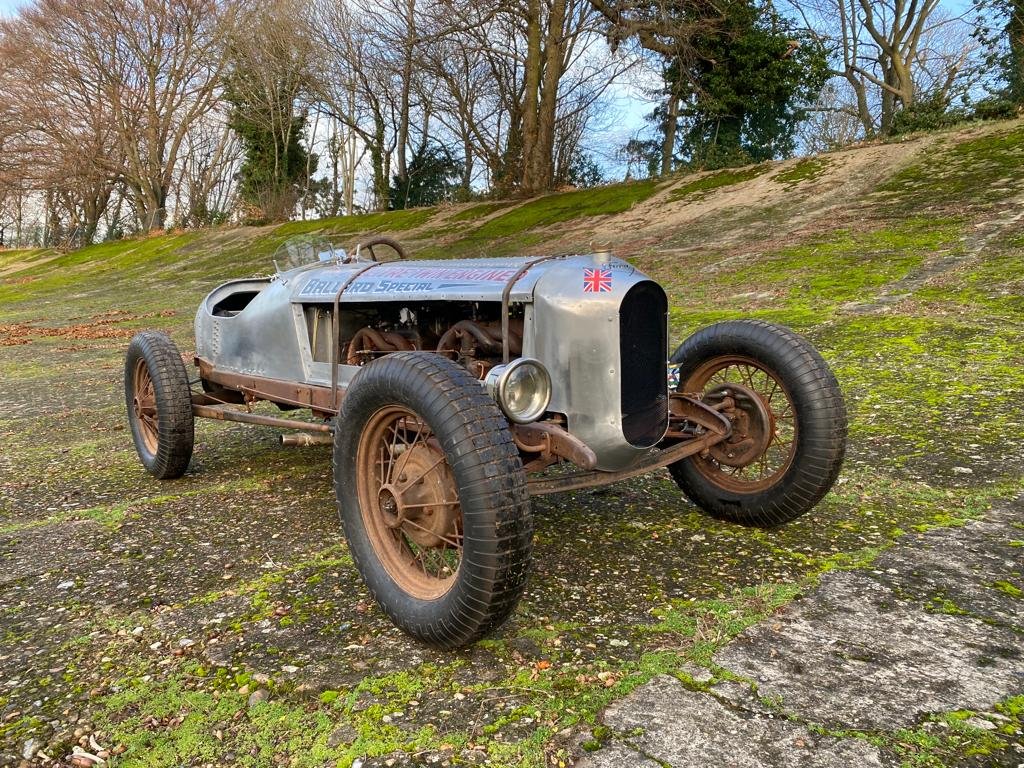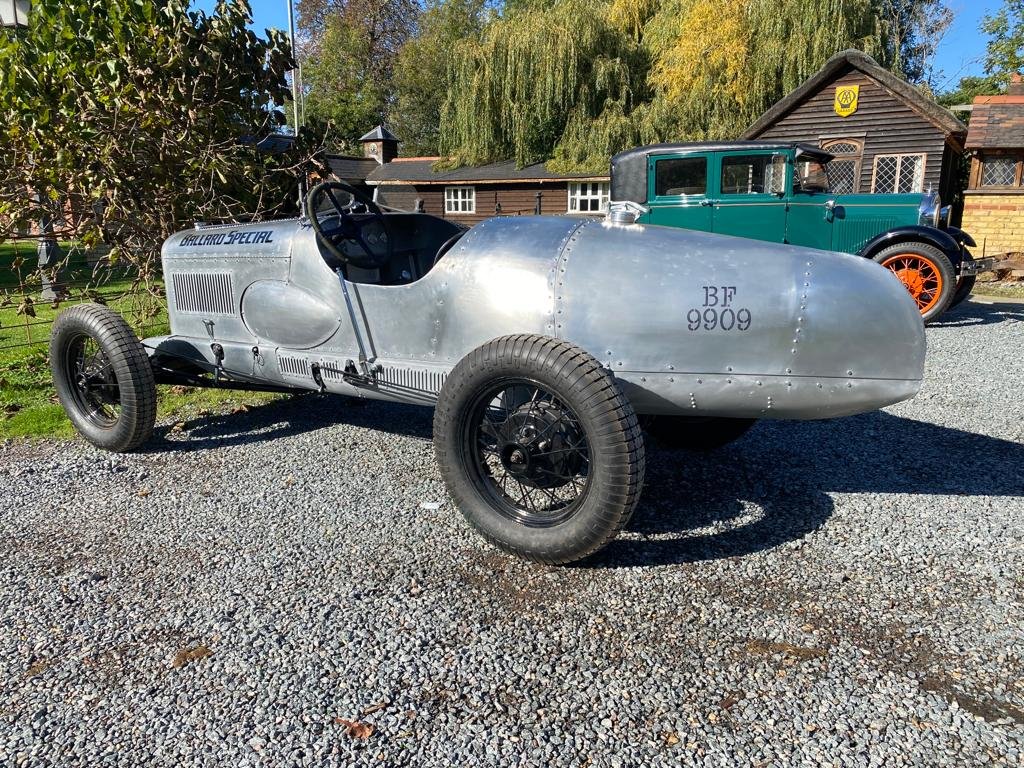
Pushing our engineering boundaries with our 2 engine special
This creation is the culmination of blood sweat and tears. Not only from myself but also from our team in Bexley, Kent.
What you see here is a rolling chassis that I’ve pulled from storage. After a lot of back and forth in my mind, I finally decided to not cosmetically restore the rolling chassis, engines or transmission. Preferring to restore and replace all necessary parts and to rebuild the engines internals without loosing the patina that has taken 90 years to mature.
You will see from the photographs that we fabricated a steel interconnected housing that the front and rear engines bolt to using the original existing bolt holes on the engines. Once this was done we knew that we still had to be able to drive the rear engine cooling system and so we had to experiment a little to find the best way to not lose traction to the final pulley after the slip from the various belts. So for this we decided to fabricate a new bottom pulley on the front engine to not only have a belt pulley but also a chain sprocket to drive a shaft down the side of the engine to the rear. This shaft in turn is a direct drive into the end of the dynamo and also incorporates a belt drive pulley to drive the rear water pump. Belts are of the old fabric machine type link belts which are the easiest way to be able to vary the length of the belts as we need to.
There was no need to lengthen the chassis but we did have to bring the support bars out from where it used to locate under the gearbox bell housing on the front and from the torque tube on the rear. The torque tube and prop shaft being significantly shorter than the original version.
Steering was moved back and lowered and a longer steering rod fabricated.
The crankshafts are pretty much standard apart from the front of the rear crank has been strengthened to cope with the torque. The detail in the connection of the crankshafts and how we have timed them is I’m afraid something that I can not share and this I will leave to the imagination and speculation of the wider community. However, I will say that some trial, error and catastrophic failure have been endured to finally succeed in the end product you see here.
The car on the road has enormous torque and the acceleration is absolutely awe inspiring and smooth, with the engines running as a straight 8 firing order. As you would imagine, from a car that has just over 7 litres or 440 cubic inches, in a vehicle that weighs around 3/4 of a ton, it has a bit of a kick.
Handling is surprisingly good with the balance being pretty even. I will not lie, this was pure luck as all I cared about was getting as much power from this Model A as I could as simply as I could. How dangerous it was to drive I didn’t and still don’t care much about. For if I die in this thing then it will be with a huge smile on my face.
Reckless, brave or stupid?? Probably all three, but where would we be without the pure and true grit of those pioneers of speed and power before us? If it wasn’t for them, willing to pay the ultimate price in the search for that perfect powertrain, on the banks of Brooklands ricing circuit, on those cold misty mornings, in the early days of motorsport and motor manufacture in the early 1900s, the whole worlds motor industry would have curved in a different direction completely, even if it was just to still end up in the same place it is in now.

